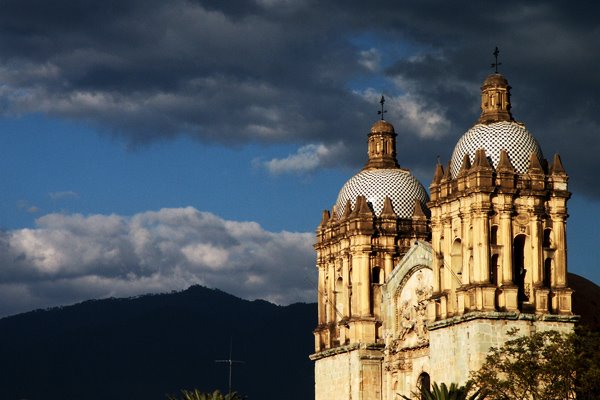
A palenque is a place where mezcal is made. It is not only the still, but the roasting pits and mash vats. It is the whole process area for turning that formidable plant, the maguey, into mezcal. Mezcal is one of Oaxaca’s trademark tastes and products. It comes in many forms and flavors and has ancient origins. It is still used in rituals and shamanistic healings. Often it is offered as a part of what could be described as a formal welcome one visiting someone’s home. Mescal is also one of the traditional gifts one brings from Oaxaca, along with chocolate and tlayudas.
More about mezcal and more.
The maguey is a remarkable plant. It provided the early indigenous people many important products including, food, water, paper, needle and thread and mezcal.
Most people do not know the difference between mezcal and tequila.
Well, Oaxaqueños do!!
So do the people of the town of Tequila in the state of Jalisco, which is just to the north of Oaxaca.
The Mexican state of Jalisco makes tequila, which is made from blue agave plants. To put it mildly, there is some little pride and competition between the two states and their liquors.
The only time I have ever been scared out in the country was the time during the piña shortage in Jalsico when we came upon a huge tractor trailer in the middle of a maguey field. There were ten men clandestinely loading piñas and one look in their eyes said we were not supposed to be there and their guns suggested we leave. We complied. Mezcal and tequila are very serious business here.
As with moles, the sauces that define Oaxacan cuisine, every single mezcal is different depending on the plant, the palenque and the mezcalero. Those who know their mezcal can immediately tell if it has been bottled in large plastic bottles or in the traditional ceramic olla. The olla acts much like an oak barrel in making whiskey. It imparts a smoothness and taste that is recognizable to the knowledgeable palette.
We were with several “knowledgeable palettes” when we visited Don Ishmael, an 84 year-old mezcalero at his palenque in Santa Catalina des Minas, which is about 40 kms southwest of the city.

The palenque was not up and working, but there was plenty of work going on and plenty of mezcal. It takes seven years for maguey to mature and there are huge fields of it in various stages of development throughout the countryside. Maguey is a large and dramatic plant and when seen in the tens of thousands across a mountain valley – only in Oaxaca.
According to Don Ishmael, after the first two years, the plants are very hardy and require little work other than normal care. But there is an art to the brewing and Ishmael is one of the masters. He let us sample from various ollas. All were delicious, but strong -110 proof. There were two grades, normal and “pechuga” in which a chicken breast has been hung in the still during distillation. They say that the minute amount of fat added makes the mescal smoother, with a slightly fuller flavor. In other ollas, Ishmael has added small amounts of various fruits, each giving its own distinctive flavors to the wonderful smokey edge of the mezcal.
The fun came when it was time to purchase. I bought some for a friend who is reopening a restaurant, El Naranjo, in the city. The only way to get the mezcal out of the ollas was to siphon it off using a hose. Of course, there is a trick to siphoning that becomes more and more elusive as one tries to suck more and more air and 110 proof mezcal.


No comments:
Post a Comment